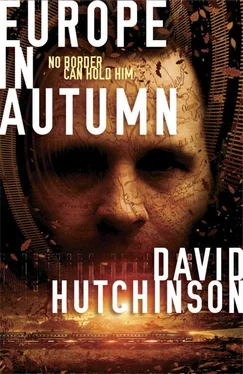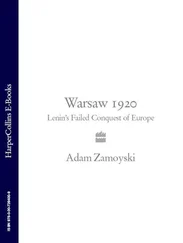In 1860, aged forty, Charles met and married Jane Breakhouse of Windsor, twenty years his junior. They would spend the next twenty years trying to have children.
3Much controversy surrounds the so-called ‘Black Sheet’ revision of 1863. No examples, notes or field drawings survive of this state, but from contemporary accounts it is possible to reconstruct how it must have appeared.
In this electrotype printing, Windsor is gone, as are Staines, Uxbridge and Brentford. Into the area bounded by them is inserted the ‘county’ of Ernshire, complete and entire with towns, villages, hamlets, roads, streams and a rail link to Paddington. The Thames cuts unchanged through the southeastern corner of Ernshire, as do other existing watercourses and physical features.
‘If Mr White (sic) thinks this a joke, let him be assured that the residents of this lovely part of the nation do not consider it so,’ wrote one irritated resident of West Drayton in a letter to The Times dated August 22 1863.
Certainly, others shared this correspondent’s irritation, because on November 12, 1864, the Black Sheet became the only map in British history to be banned by order of Parliament. ‘For the good of the Nation,’ wrote one Minister to Whitton-Whyte later that month. Whitton-Whyte’s reply has not survived.
4The final revision of Sheet 2000, the illegal ‘Natal Sheet,’ was published on July 7 1890, the day of Charles’s son’s birth. His wife lived barely long enough to see the child and name him Edwin.
Only two examples of the Natal Sheet were ever printed, of which this is the single survivor.
On it, we can clearly see the final flowering of the Whitton-Whytes’ peculiar obsession. Ernshire has consolidated itself – in Charles’s mind if nowhere else. Its county town, Stanhurst, is a bustling place roughly the size of present-day Loughborough. It has rail links to the four points of the compass, an extensive road network, a barracks in Anselmdale, farms, churches, post offices, all the amenities of a real county, even a manor house at Eveshalt.
The Parliamentary banning order notwithstanding – it was, after all, simply a revision of the banned Black Sheet – the Natal Sheet was displayed in a gallery in Islington, and seems to have engendered a curious wave of hoaxes.
All through the summer of 1890, newspapers and public institutions were bombarded with communications from the towns of Ernshire. The Times received letters from the inhabitants of Stanhurst and Eveshalt. Buckingham Palace received an invitation for the Queen to review the garrison at Eveshalt. A picture-postcard of St Anthony’s Cathedral in Stanhurst is reported to have been delivered to the residence of the Archbishop of Canterbury, inviting him to make a pastoral visit. And a woman in Margate claimed to be having a correspondence with a young man from Adam Vale. In a fit of madness which was later to result in the sacking of one manager, the prosecution of another for fraud, and the forcible retirement to a coastal sanatorium of a third, the South Western Railway produced posters advertising day-trips to the ‘historic’ town of Stanhurst.
In September 1890 a special Act of Parliament was passed forbidding any member of the Whitton-Whyte family from ever publishing another map. Imprisonment was considered for Charles but rejected ‘due to his infirmity.’ A fine was similarly rejected due to the parlous state of the family’s finances.
In the event, punitive measures proved unnecessary. The following year, Charles Whitton-Whyte left his little house in Datchet (where he insisted on living despite the fact that on his map Datchet did not exist.) He locked his front door, handed his infant son to his wife’s sister, Mrs Margaret Allen, and walked away down the road.
‘Of his illness there was no sign,’ Mrs Allen later wrote to a cousin. ‘His head was held high, his step was firm and sure, and he swung his stick with vigour as he walked away from Edwin and myself.’
Charles was never seen again.
5Edwin Whitton-Whyte took his mother’s maiden name of Breakhouse, and under his aunt’s care showed no interest in cartography. Despite the shame of his father’s madness he was accepted into Eton, and later went up to Oxford to study ‘Greats.’ In 1914 he enlisted and was sent to the Western Front, where he acquitted himself with distinction, rising to the rank of Sergeant.
Edwin kept meticulous journals, but only once did he refer to his father and to the Alternative Survey.
My father believed, he wrote, as did my grandfather and great-grandfather, that he had discovered a county where none exists, a landscape overlooked by the very people who occupy it. My grandfather writes of maps having a power over the land, and theorises that if an imaginary landscape is mapped in great enough detail, it will eventually supplant the actual physical landscape, as a wet cloth wipes chalk from a blackboard.
My great-grandfather, on the other hand, wrote of all possible landscapes underlying each other like the pages of a book, requiring only the production of a map of each landscape to make it real.
Whatever their motivations, my family have spent over a century exploring these theories by documenting in great detail the growth of a county called ‘Ernshire,’ which patently has no existence in the real world.
And yet today I received a letter purporting to be from my father! If he is still alive, he must be nearly a hundred years old, but though I have no memory of him I recognise his handwriting from his diaries and memoranda.
In his letter, he wishes me well, and says he is proud of me, though I do not know how he could be aware of my life-story, unless Aunt Peggy has been in contact with him. He claims to be living in ‘Ernshire.’ He begs me to visit him, and gives detailed instructions on how to get there. He says the eight-seventeen from Paddington sometimes calls at Stanhurst, and that he has ‘confidantes’ among the staff of the Windsor Branch of the South Western Railway who will ensure my safe passage to a county which does not exist.
Madness. This is patently a hoax, and I have despatched a letter instructing my solicitors, Messrs. Selhurst, Barley and Cainforth, to trace and prosecute the writer of this awful missive. I suspect one of my father’s ex-employees, though I have also been led to believe that during the scandalous summer of my birth, a member of the South Western Railway’s staff was prosecuted, in part due to the hysteria brought about by my father’s maps. I have instructed Mr Barley to trace this man as a matter of the gravest urgency.
6Edwin Breakhouse was killed leading his men ‘over the top’ on the Somme. Many of his personal effects were never delivered to his aunt in England, among them the letter to which he refers in his journal. All record of his contact with his solicitors was destroyed when the offices of Selhurst, Barley and Cainforth burned down in April 1918, shortly after the deaths of all three senior partners in the Staines Train Disaster of March of that year.
7Sheet 2000 may be the last remaining example of a peculiarly English sensibility, the same sensibility which induced land-owners to build ‘follies’ on their estates. A folly most often took the form of a structure with no function other than the satisfaction of its builders’ vanity, and Sheet 2000 could be seen as the Whitton-Whytes’ folly – in both senses of the word. It remains as merely an extraordinarily-detailed scrap, a remnant of a work which occupied the lives of hundreds of people over a century and a half, and perhaps a remnant of an age now long-gone.
Читать дальше







